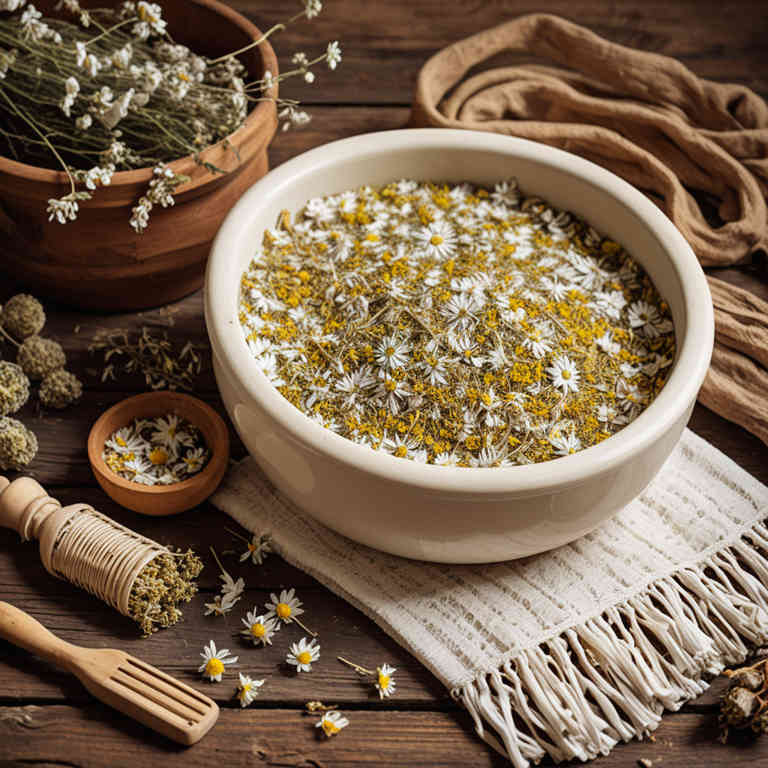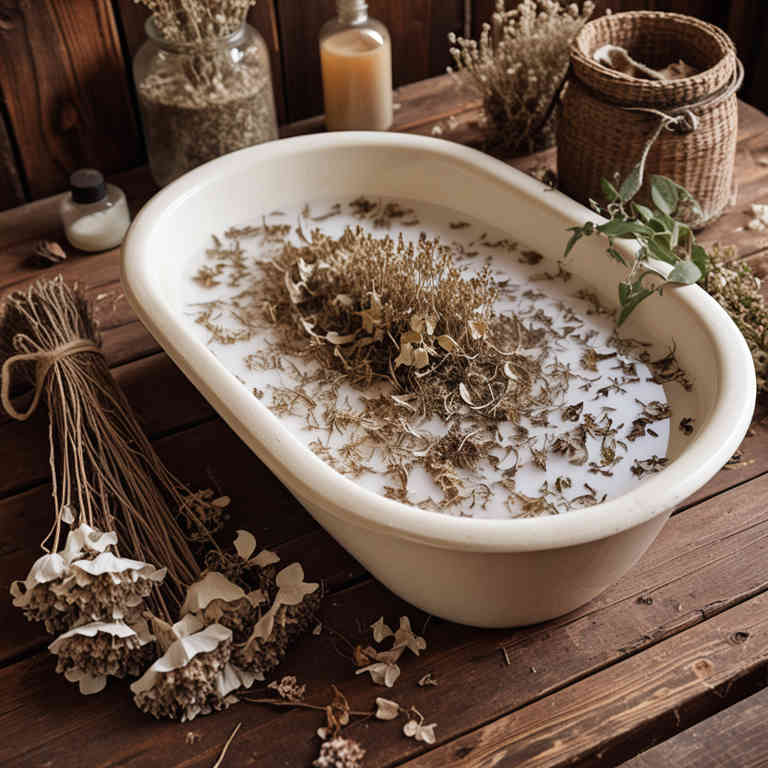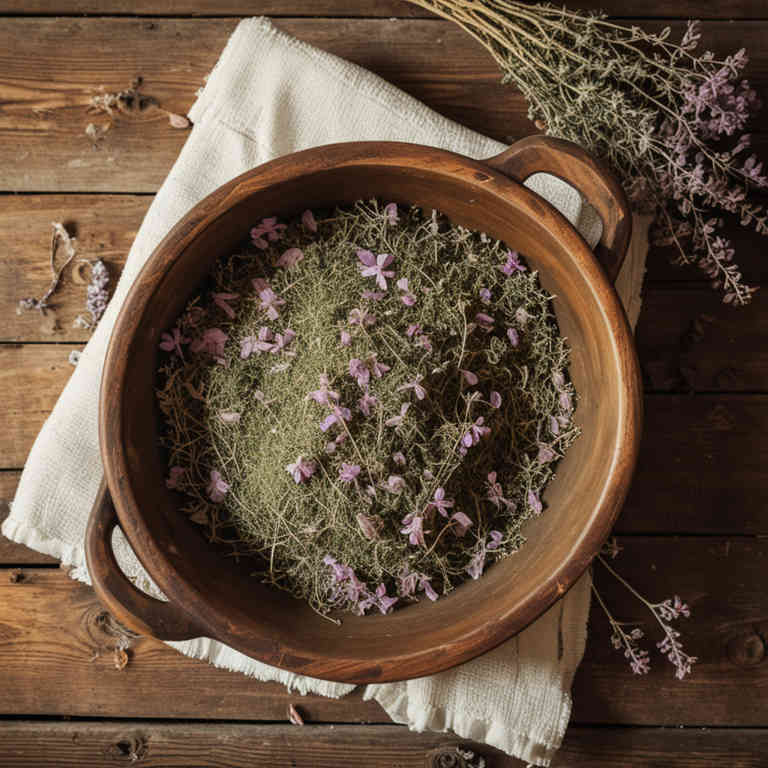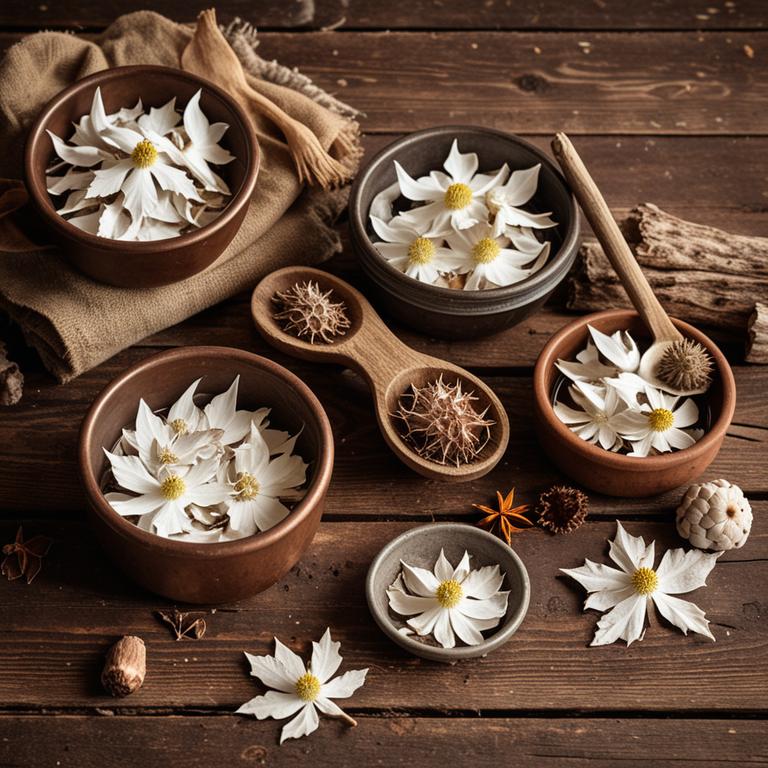10 Best Herbal Baths For Boils

Herbal baths can be a natural and soothing remedy for treating boils by leveraging the anti-inflammatory and antimicrobial properties of certain herbs.
Commonly used herbs such as chamomile, echinacea, and calendula are known for their ability to reduce redness, swelling, and infection around the affected area. To prepare an herbal bath, simply steep a handful of dried herbs in hot water, then add the mixture to a basin of warm water for soaking. Soaking in the bath for 15 to 20 minutes can help draw out impurities and promote healing.
However, it is important to consult a healthcare professional if the boil is severe or shows signs of spreading infection.
FREE Herb Drying Checklist
How to make sure every batch retains maximum flavor, color, and aroma without the risk of mold or over-drying. Eliminate guesswork and trial-and-error, making herb drying faster, easier, and more efficient every time.
Table of Contents
1. Chamomilla recutita

Chamomilla recutita, commonly known as chamomile, has been traditionally used for its soothing and anti-inflammatory properties, making it a popular choice for herbal baths to treat boils.
When infused into warm water, chamomile can help reduce redness, swelling, and pain associated with boils by calming the skin and promoting healing. The essential oils in chamomile, such as bisabolol and chamazulene, possess antimicrobial and antiseptic qualities that may aid in preventing infection and accelerating the recovery process. Taking a chamomile-infused bath can also provide a calming effect, helping to alleviate stress and promote overall relaxation.
However, it is advisable to consult a healthcare professional before using chamomile baths, especially if the boils are severe or show signs of infection.
2. Hypericum perforatum

Hypericum perforatum, commonly known as St. John's Wort, has been traditionally used in herbal baths to help alleviate symptoms of boils due to its anti-inflammatory and antiseptic properties.
When infused into warm water, the bath can soothe the skin, reduce redness, and promote healing by encouraging the drainage of pus from infected areas. The active compounds in St. John's Wort, such as hypericin and flavonoids, may help combat bacterial growth and reduce inflammation associated with boils. However, it is important to consult a healthcare provider before using St. John's Wort, as it can interact with certain medications.
Regular use of a St. John's Wort herbal bath may provide natural relief and support the body's healing process when used as part of a comprehensive treatment plan.
3. Achillea millefolium

Achillea millefolium, commonly known as yarrow, has been traditionally used in herbal baths to help soothe and heal boils due to its anti-inflammatory and antimicrobial properties.
When infused into warm water, yarrow can help reduce redness, swelling, and pain associated with boils by promoting skin healing and preventing infection. The essential oils and tannins in yarrow also help to draw out impurities and promote drainage from the affected area. To prepare an herbal bath, simply steep a handful of dried yarrow in boiling water for 15-20 minutes, then allow the liquid to cool slightly before using it to soak the affected area.
While herbal baths can provide relief, they should be used in conjunction with proper hygiene and, if necessary, medical treatment for persistent or severe boils.
4. Urtica dioica

Urtica dioica, commonly known as stinging nettle, has been traditionally used in herbal baths to help alleviate symptoms of boils due to its anti-inflammatory and antimicrobial properties.
When infused into warm water, the bath can help reduce swelling, soothe pain, and promote healing of the affected skin areas. The plant contains compounds such as histamine and formic acid, which may initially cause a stinging sensation but are believed to stimulate circulation and detoxification. Using a stinging nettle bath involves steeping fresh or dried leaves in hot water for several hours before soaking the skin.
Regular use of this herbal bath can support the body's natural healing processes and may serve as a complementary therapy for managing boils.
5. Equisetum arvense

Equisetum arvense, also known as field horsetail, has been traditionally used in herbal baths to help alleviate symptoms of boils due to its high concentration of silica and other anti-inflammatory compounds.
The herb is believed to promote skin healing and reduce infection by drawing out impurities and soothing inflamed tissues. To prepare an herbal bath, steep dried equisetum in hot water for several hours, then add the infusion to warm bath water. Soaking in this bath for 15 to 20 minutes may help reduce swelling, pain, and the risk of complications from boils.
While equisetum arvense can be a supportive remedy, it is advisable to consult a healthcare professional before using it, especially for severe or persistent skin infections.
6. Symphytum officinale

Symphytum officinale, commonly known as comfrey, has been traditionally used in herbal baths to treat boils due to its anti-inflammatory and healing properties.
When prepared as a bath, comfrey can help reduce swelling and promote the drainage of pus from infected areas, providing relief from the discomfort associated with boils. The active compounds in comfrey, such as allantoin and rosmarinic acid, support skin regeneration and may accelerate the healing process. However, it is important to note that comfrey should not be used on open wounds or for extended periods due to potential toxicity from pyrrolizidine alkaloids.
Despite its benefits, consulting a healthcare professional before using comfrey baths is advisable, especially for individuals with sensitive skin or underlying health conditions.
7. Thymus vulgaris

Thymus vulgaris, commonly known as thyme, has been traditionally used in herbal baths to alleviate symptoms of boils due to its antimicrobial and anti-inflammatory properties.
When infused into warm water, thyme essential oil or dried thyme leaves can create a soothing bath that helps reduce infection and promote healing of skin abscesses. The aromatic compounds in thyme, such as thymol, have been shown to inhibit the growth of bacteria, which may contribute to the development of boils. Using a thyme herbal bath can also provide a calming effect, helping to ease the discomfort associated with boils.
However, it is important to consult a healthcare professional before using thyme baths, especially for severe or persistent skin infections.
8. Lavandula angustifolia

Lavandula angustifolia, commonly known as English lavender, is often used in herbal baths for its soothing and antimicrobial properties.
When added to warm bath water, lavender essential oil or dried lavender can help reduce inflammation and promote healing in cases of boils. The aromatic compounds in lavender have been shown to possess antibacterial effects, which may help combat the bacterial infection associated with boils. A lavender-infused bath can also provide a calming effect, easing discomfort and promoting relaxation during the healing process.
However, it is important to consult a healthcare professional for severe or persistent boils, as herbal remedies should complement, not replace, proper medical care.
9. Rosmarinus officinalis

Rosmarinus officinalis, commonly known as rosemary, is a herbal remedy that has been traditionally used for its therapeutic properties, including its potential benefits in treating boils.
When used in herbal baths, rosemary can help reduce inflammation and soothe the skin due to its anti-inflammatory and antimicrobial compounds. The essential oils derived from rosemary leaves, such as 1,8-cineole and camphor, contribute to its effectiveness in promoting healing and preventing infection. To prepare a rosemary herbal bath, one can steep fresh or dried rosemary in hot water and then add it to a tub of warm water for soaking.
Regular use of such baths may help alleviate the discomfort associated with boils and support the body's natural healing process.
10. Sanguinaria canadensis

Sanguinaria canadensis, commonly known as bloodroot, has been traditionally used in herbal medicine for its potential anti-inflammatory and antimicrobial properties.
When prepared as a herbal bath, bloodroot can be used to help soothe and reduce the appearance of boils by promoting skin healing and reducing infection risk. To create a bath, the dried roots are simmered in water to extract their active compounds, and the resulting liquid is then used to bathe the affected area. However, it is important to note that bloodroot contains toxic compounds and should be used with caution, ideally under the guidance of a qualified herbalist or healthcare provider.
Due to its potency, it is not recommended for use on open wounds or for prolonged periods without professional supervision.